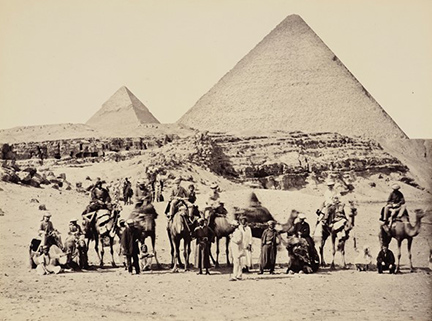
The Prince of Wales and group at the Pyramids, Giza, Cairo, March 1862 Royal Collection Trust / (c) Her Majesty Queen Elizabeth II 2014
Prints from first photographed royal tour go on show at Buckingham Palace. Click here to see ten images.

The Prince of Wales and group at the Pyramids, Giza, Cairo, March 1862 Royal Collection Trust / (c) Her Majesty Queen Elizabeth II 2014
Prints from first photographed royal tour go on show at Buckingham Palace. Click here to see ten images.
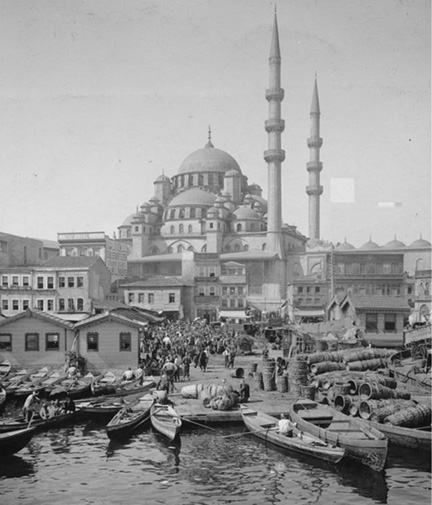
A gallery of 40 photographs of Istanbul during the late Ottoman period is available online at http://ilmfeed.com/40-photos-of-ottoman-istanbul-from-the-1900s/. Here is a small sample.
Continue reading Ottoman Istanbul in the early 1900s
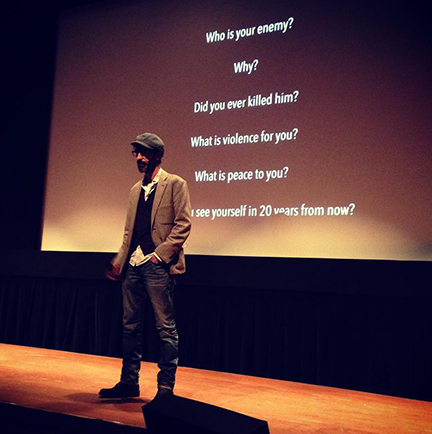
The Sundance Institute has announced the six projects set for this year’s New Frontier Story Lab, a hands-on initiative for developing content that converges at the intersection of “film, visual art, media, live performance, music and technology.†The 2014 creative teams and projects are Karim Ben Khelifa and Chloé Jarry (The Enemy), Dandypunk and Darin Basile (Heart Corps), Tracy Fullerton and Lucas Peterson (Walden, A Game), Braden King and Matthew Moore (Weather), Hasan Minhaj and Greg Walloch (Sakoon/Paint The Town) and Navid and Vassiliki Khonsari (1979 Revolution). Previously supported projects include #PostModem (from 25 New Faces Jillian Mayer and Lucas Leyva), Kill Shakespeare, 18 Days in Egypt and The Silent History.
Workshopping at the Lab, which runs from October 22 – 27 at the Sundance Resort in Park City, includes individualized story sessions, conversations about key artistic, design and technology issues, and case study presentations from experts in diverse related disciplines. Detailed descriptions of each project can be found below.
The Enemy
Karim Ben Khelifa and Chloé Jarry
The enemy is always invisible; When he becomes visible, he ceases to be the enemy. Two combatants from opposing sides observe each other. Each of them explains why they are fighting – what made them decide to take arms in order to defend their beliefs, their family, their country, their clan or their faith.
Karim Ben Khelifa is an award winning photojournalist and war correspondent who has freelanced regularly for Time Magazine, Vanity Fair, Le Monde, the New York Times Magazine, Stern and dozens of others. He was the 2012 Carroll Binder Fellow at the Nieman Foundation for Journalism at Harvard University, where he has also given talks and lectures.
He is currently a Visiting Scholar and Artist-in-Residence at the Open Documentary Lab at the Massachusetts Institute of Technology in Cambridge. Continue reading Karim Ben Khelifa at Sundance
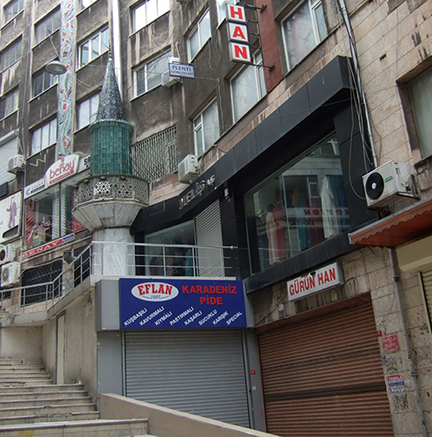
Istanbul, where minarets share space with commercial signs
Having spent a short eid vacation in Istanbul, I had the opportunity to walk around the Sultan Ahmet and Eminönü areas. The main streets near the Sultan Ahmet mosque and Topkapi were full to overflowing with tourists from just about everywhere. The lines to enter the major sites stretched for hour-long waits, so I decided it was more prudent to simply walk the back streets with no particular goal in mind. On the way to the Spice Suq, where many of the shops remained open to satisfy the crowds of tourists and merchants’ pockets, I saw the iconic duality of modern Turkey in full force. On one building is a commanding mural of Ataturk, but across the street rises a conservative Islamic center. Down the road from an Ottoman religious shrine there will be a Starbucks or Burger King. Outside a fashion store is a giant image of a vivacious woman in Victoria’s Secret-like underwear, as a woman in niqab walks by. East and West, Ottoman vs. Republic, liberal and conservative: contemporary Turkey is where academically unfashionable binaries rule the streets, if not the hearts and minds of many Turks.
Of course this is the touristic center of Istanbul, complete with the tram stop that always seems to have a crowd outside. There must be a hundred or more small hotels and just as many restaurants and cafes. Kebab (or Kebap, if you prefer) is cuisine’s sultan here today. We stayed in the delightful and relatively inexpensive World Heritage Hotel, where the hospitality and ambiance are superb, and only a short walk from the Sultan Ahmet mosque, whose majestic minarets we could see from our breakfast table. Of the many restaurants nearby, my favorite was Amedros, which offers a wide range of dishes beyond the ubiquitous kebab fare. For authentic Ottoman cuisine, be sure to visit Asitane, which is near the Kariye Camii and Chora Church Museum. Of course, the joy of being in Istanbul is the constant discovery of something you will enjoy. If you have never walked these streets and alleys, you are missing a jewel outside the museums, splendid as they are.
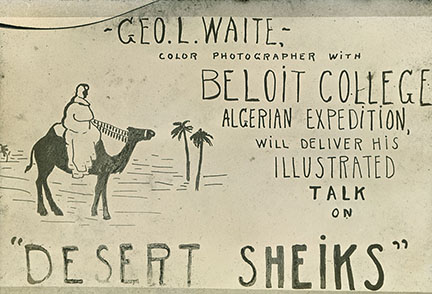
There is an extraordinary collection of 47 Magic Lantern slides from the 1930 Beloit College Logan Museum Expedition to Algeria by George L. Waite, the photographer and cinematographer. This is available in an online collection at the website of the Smithsonian Institution. Click here to access the collection.
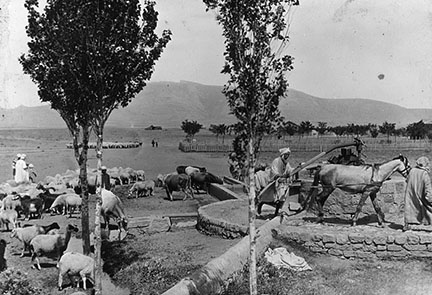
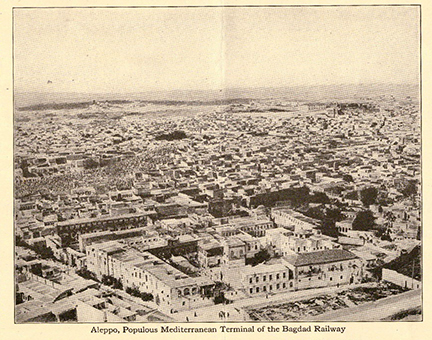
I recently across a copy of The Christian Herald from December 1, 1915 and the lead article by John Maynard Owen Williams is on a recent trip he took to Syria and Iraq. The images are from a century ago and I attach a few excerpts from the article. For the first part, click here.
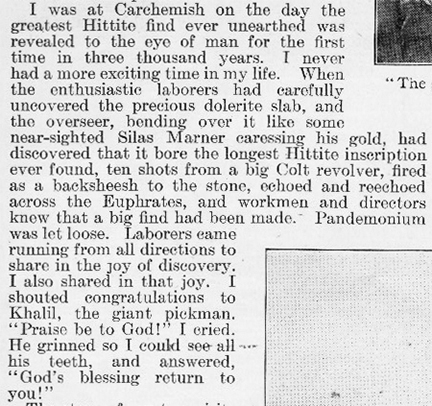
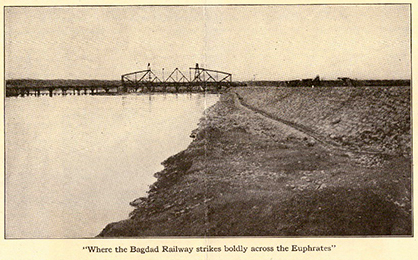
to be continued
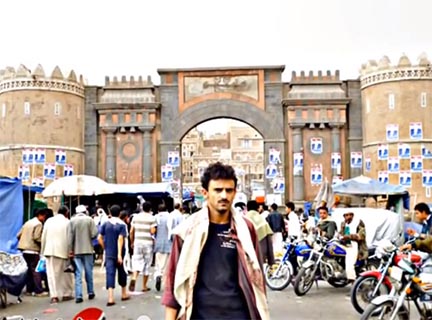
يقرب الله لي بالعاÙيه والسلامه … وصل الØبيب الأغن
ذاك الØبيب الذي Øاز الØلا والوسامه … وكل معنى Øسن
ونسأل الله تعالى عودنا من تهامه … الى سÙØ ØµÙ†Ø¹Ø§Ø¡ اليمن
لأن صنعا سقاها الله Ùيض الغمامه … منزل Øوت كل ÙÙ†
ما مثل صنعاء اليمن … كلا ولا أهلها
صنعاء Øوت كل ÙÙ† … يا سعد من Øلها
تطÙÙŠ جميع الشجن … ثلاثَ ÙÙŠ سÙØها
الماء وخضرة رباها الÙايقه والوسامه … وكل معنى Øسن
كم يضØÙƒ الزهر Ùيها من دموع الغمامه … Ùيا سقاها وطن
يا ليت شعري متى الأيام ØªØ³Ù…Ø Ø¨Ø±Ø¬Ø¹Ù‡ … إلى مدينة أزال
ونستعيد ما مضى يا سيد Ø£Ùديك جمعه … وطيب بساط المطال
لأن من بعدكم ما ك٠لي قط دمعه … والشوق بي لا يزال
وكلما غردت ورقاء بأعلى البشامه … طلقت طيب الوسن
أهيم ÙÙŠ عشقتك … والدمع جاري غزير
ÙˆØ§Ù„Ø±ÙˆØ ÙÙŠ قبضتك … وانا بØبك أسير
والقلب من Ùرقتك … يكاد Ù†Øوك يطير
ÙارØÙ… أسير الهوى من قد تزايد غرامه … إن لم تكن له Ùمن
لأنني لا أطيق الهجر ذا والعدامه … ولا Ø£Øتمل ذا الشجن
تظن يا منيتي ان قد نسيت أو تناسيت … او خنت عهدي القديم
شاØل٠براسك بأني Ùيك من Øين وليت … أبكي Ùˆ ساعه واهيم
ولا Øلى لي سواك Ùˆ لا بغيرك تسليت … يمين والله عظيم
يا ناس ما Øيلة المشتاق ÙÙŠ ريم رامه … ما Øيلة ابن الØسن
يا ربنا يا مجيب … عجل لنا بالرواØ
لوصل ذاك الØبيب … بالأنس والإنشراØ
والدهر ذاك الكئيب … قد تقضًى وراØ
سهل لنا منك باللط٠الخÙÙŠ والكرامه … وعاÙنا واع٠عن
صلي وسلم على طه Ø´Ùيع القيامه .. والأل ما المزن شن
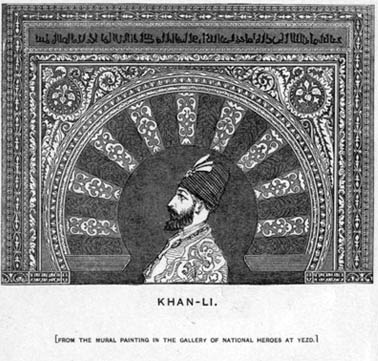
There was a time when “Oriental Tales” were the rage of the age. Montesquieu penned Lettres Persanes in 1721 and Oliver Goldsmith followed up several decades later with The Citizen of the World. But I recently came across a late 19th century text about a future visit of a Persian Prince and Admiral to the ruins of a land known as Mehrica. This is The Last American and purports to be the journal of Khan-Li, a rather bizarre name for a Persian but so thoroughly Orientalist in mode. The Introduction to the text was provided in a previous post.
It is quite apt that the epigraph for the book is a dedication to “the American who is more than satisfied with himself and his country.”
Given the recent “Occupy Wall Street” interest, here is a century old look at what it might have been in ruins…
Continue reading Tabsir Redux: The Last American, #2